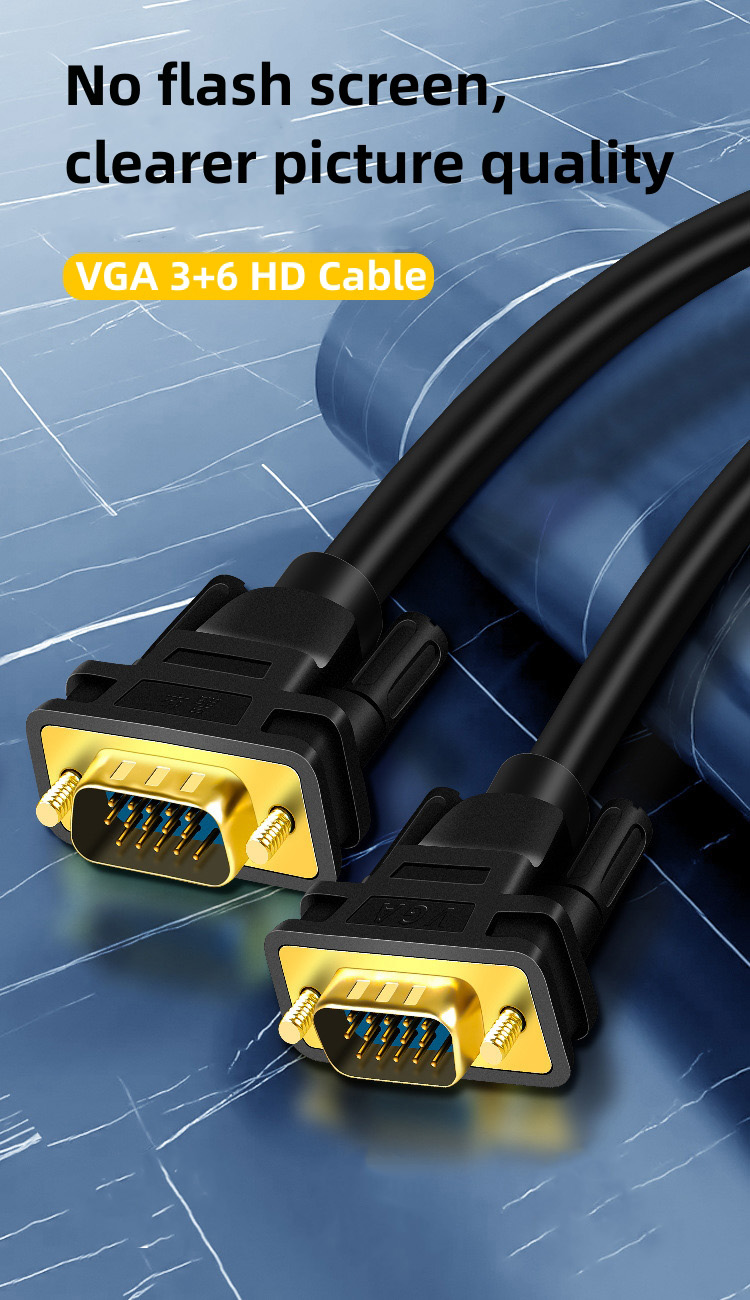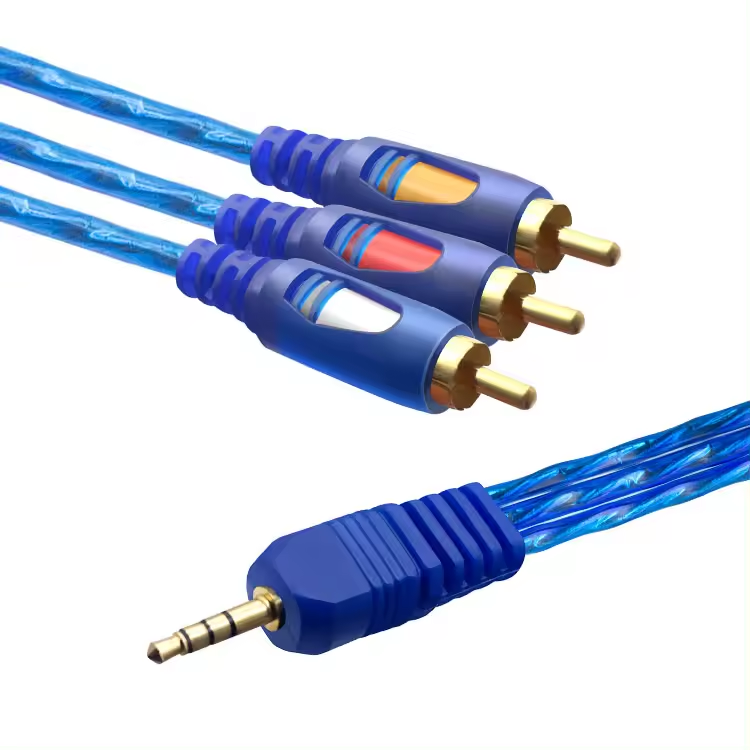01
Amewire on the hunt for an inexpensive 3+6 VGA Standard VGA Male to VGA Male cable that still delivers top-notch performance

Standard 15-Pin VGA Connectors
This standard 15-pin VGA cable stands as the top selection for both home and professional setups, serving as the ideal solution for linking your PC to a monitor, HDTV, or video splitter. This standard 15-pin VGA cable serves as the primary option for both home and professional installations, offering seamless connectivity from your PC to a monitor, HDTV, or video splitter. As the go-to choice for home and professional environments alike, this standard 15-pin VGA cable is perfect for establishing connections between your PC and a monitor, HDTV, or video splitter.
Triple Shielding
With triple shielding of CCS conductors, this cable effectively safeguards against radio frequency interference (RFI) and electromagnetic interference (EMI), ensuring uninterrupted signal transmission. Even over extended lengths, susceptibility to environmental interference won't compromise your signal quality.The interface boasts a 24K gold plating, providing optimal conductivity and corrosion resistance for enhanced signal transmission and durability.


Ferrite Beads
Featuring ferrite beads at both terminations, this cable adds an extra shield against signal interference, ensuring unparalleled signal clarity whether you're computing or streaming content to your HDTV. With ferrite beads strategically placed at each end, this cable offers additional defense against signal interference, guaranteeing optimal signal integrity whether you're using your computer or streaming a movie to your HDTV. Integrated ferrite beads at both cable ends provide an additional layer of protection against signal interference, ensuring a pristine signal whether you're working on your computer or streaming a movie to your HDTV.
Molded Strain Relief
VGA (Video Graphics Array) is a widely used analog video connection standard that has played a pivotal role in computing and display technology. Introduced by IBM in 1987, VGA became the standard interface for connecting monitors and computers, offering a maximum resolution of 640x480 pixels and supporting a wide range of display devices. While newer digital standards like HDMI and DisplayPort have largely supplanted VGA in modern systems, VGA remains relevant in legacy equipment, industrial applications, and certain specialized scenarios. Its widespread adoption and long-standing compatibility have solidified VGA's significance in the history and evolution of display connectivity technology.
















